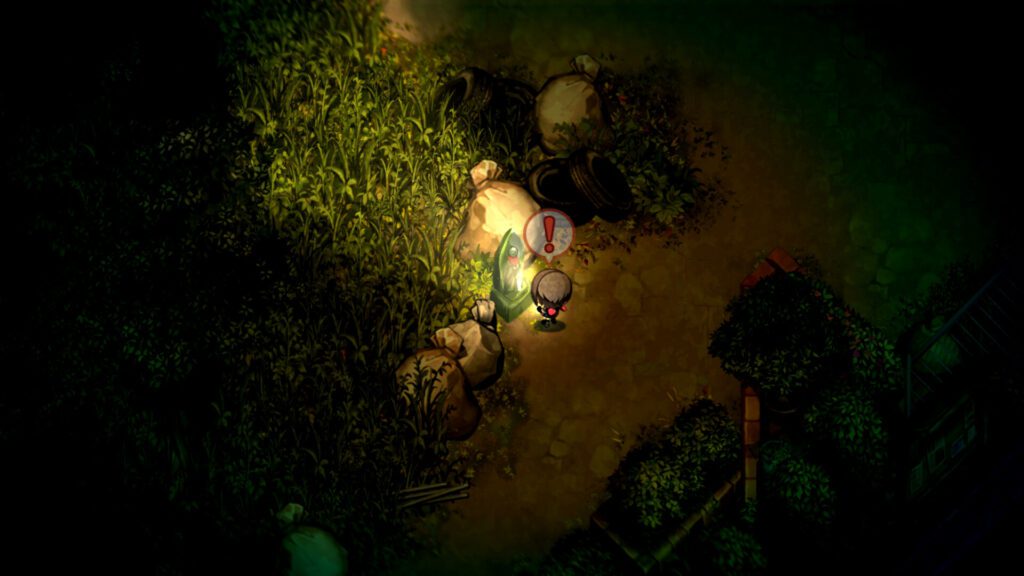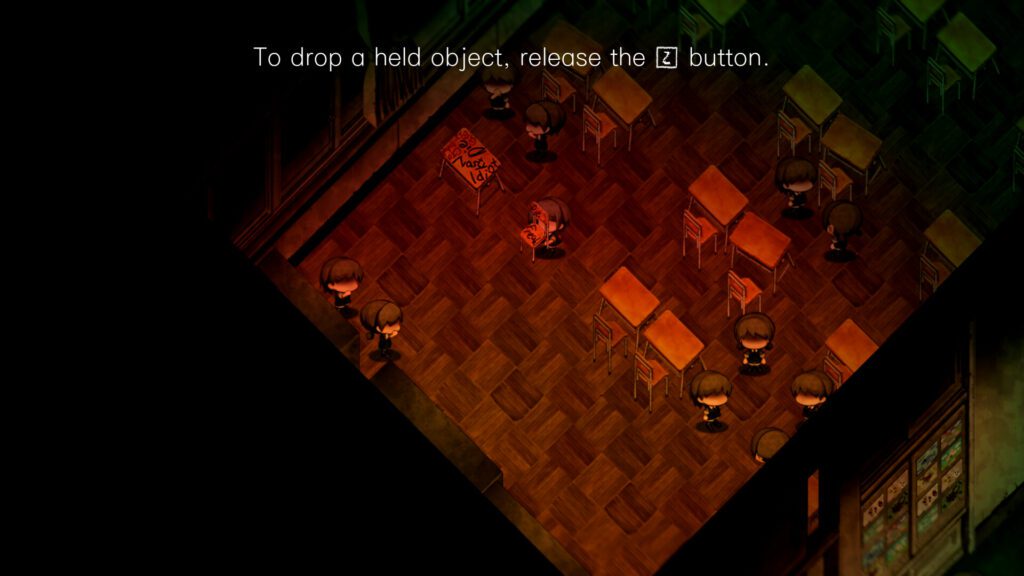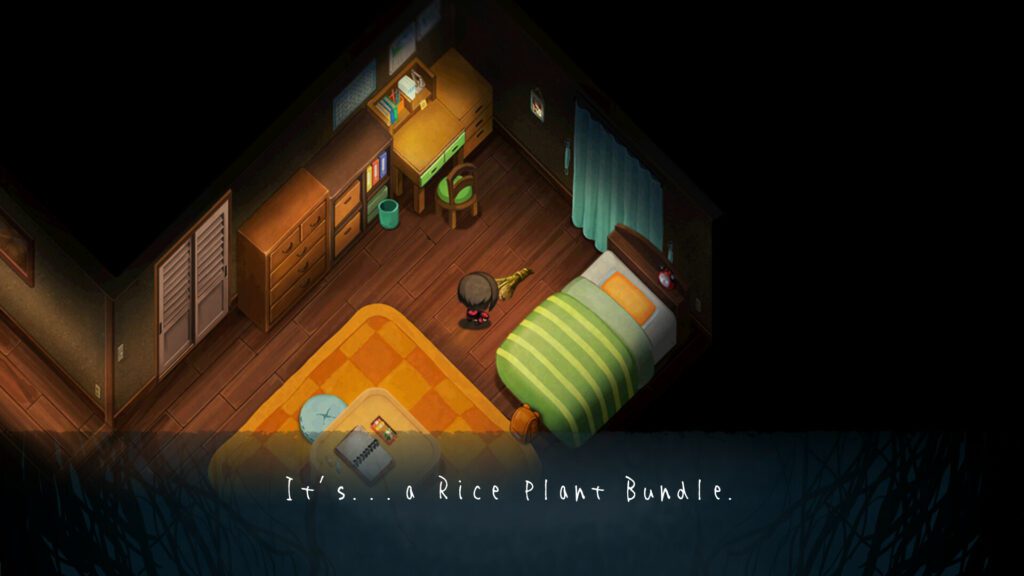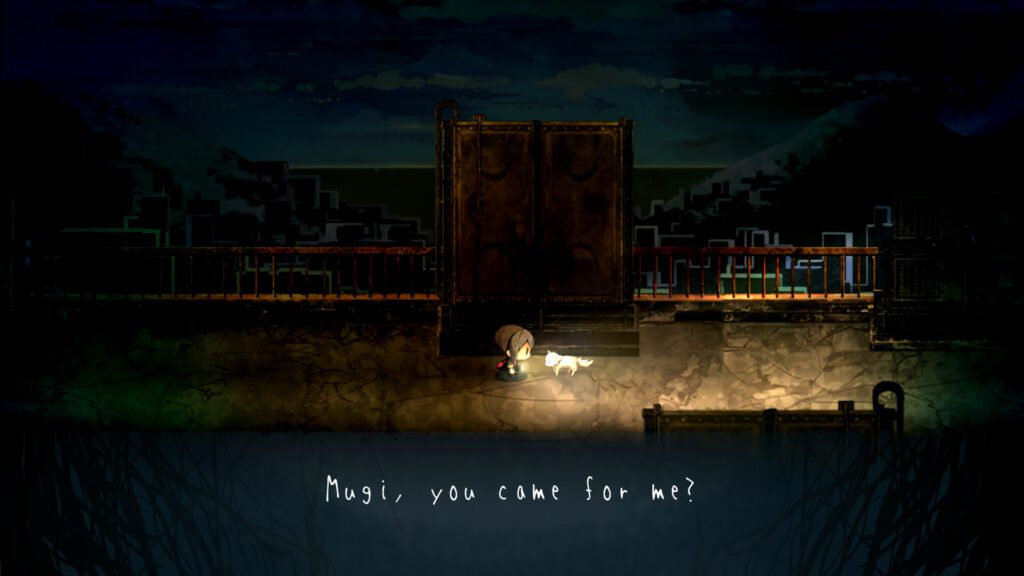The Halloween season had just begun, and as a resident scaredy cat, I thought it would be amusing to try my hand at a somewhat modest horror game. Yomawari: Lost in the Dark reminded me of the classic RPG horror games I used to play as a teen (Corpse Party, Mad Father, Ib, The Witch’s House), so I figured, ‘I can handle this, right?’ No, I was mistaken, since throughout the majority of my 10-hour playing of Yomawari: Lost in the Dark, I was pursued by terrible ghosts, horrified by scarecrows, Slenderman’s, and cursed dolls, and on the point of tears every time my flashlight ran out.

Yomawari: Lost in the Dark is a new 2D horror game in the Yomawari franchise that should not be overlooked. Lost in the Dark, developed by Nippon Ichi Software and published by NIS America, will make novice horror game gamers afraid but also unable to put the game down due to the compelling tale that follows it.
As a newcomer to the series, I was startled to learn that each Yomawari game is a stand-alone experience set within the same environment. Yomawari: Lost in the Dark depicts a young girl who, after witnessing a terrible bullying episode, in the beginning, looks up at the sky from the school rooftop and finds herself in a cursed parallel world.
Her once beautiful and vibrant village is now covered in darkness and overrun by frightening spirits. Worse, the girl has been cursed. And the only way to break it is for her to find her lost memories dispersed throughout town.

Yomawari: Lost in the Dark wants you to know that you’re on your own, throwing me into the deep end with only my torch and a solitary memory to guide me. I had no choice but to begin exploring the vast town crawling with evil spirits. There are no quest markers, the map is blank, and there are only a few map signages to look at to get a sense of my surroundings.
It was evident that the game’s gameplay is non-linear and semi-open-world. And in a horror game, that is extremely effective.
Stepping out into a world filled with monsters that could easily kill me seemed more terrifying without a sense of direction. Yomawari: Lost in the Dark also lacks an auto-save feature. This meant that I had to find Jiz Bosatsu shrines (my magnificent saves) scattered across town to save. Yomawari: Lost in the Dark produces tension in this way because death is harsh. So, if I’m running for my life from a spirit because I can’t remember the last time I saved, and a jump scare appears on the screen, it’s very effective.
Yomawari: Lost in the Dark mainly relies on a now-common survival-horror mechanic that I’ve grown to both love and despise… stealth. Instead of fighting the spirits who haunt her, the young girl has three options: run, sneak, or close her eyes. The final mechanic is an intriguing addition, because in Yomawari if the female does not look the spirits in the eyes, they will ignore her (mostly). The screen will go dark, and instead of ghosts, red clouds will appear, which the girl can navigate through to safety. All the while, a loud heartbeat blares into your headset, reminding you that if you open your eyes, you will die.
“Full with symbols and imagery, Yomawari: Lost in the Dark invites players to explore the world for deeper lore.”
Some ghosts in the game are immune to the shut-eye strategy, so I had to perfect the art of frenzied running and eye-closing until I was safe. Because I had to react so rapidly to varied events, the frequent shift in spirit kind of kept the gaming tense. On the other hand, it also meant that trial and error were necessary when researching some areas. Because of how punishing death was, this became tedious and frustrating.

Around halfway through the game, I had figured out the mechanics well enough that it was no longer challenging. That’s when the fractures in Yomawari: Lost in the Dark began to appear. Death became less frightening after I had explored the majority of the map and knew the mechanics. And the glue that held the horror together began to fray. Yomawari: Lost in the Dark becomes monotonous as you run, close your eyes, and pick up an object; rinse and repeat for each boss fight. Over ten hours, the game tries to grow. The terrifying magic of the first 5 hours has been replaced by dread at having to repeat the same mechanism over and over again.
Despite its repetitive mechanics, Yomawari: Lost in the Dark is a fantastic environment to discover. Each region is brought to life by the Japanese folklore that has been gently weaved into it.
During my gameplay, I came across a frightening cave with a talisman above it. I had to walk through a spirit-infested alpine field, laying scarecrows on shrines, to unlock it. Hundreds of heaped stones fell to the ground when I did. Perhaps ominous? The souls of children who died before their parents create stacked stones in Japanese folklore.
Every day, youkai (demons) smash these stones in the hopes of capturing energetic children. The Ykai are portrayed by scarecrows in Yomawari: Lost in the Dark, who break the remaining heaped stones once the cave is freed. And you can probably anticipate what happens next…
Yomawari: Lost in the Dark is a game full of symbols and imagery that allows players to search for deeper mythology in the universe. There are hints everywhere, and the constant mystery keeps you interested.
Consider the mansion in the bamboo jungle. Hina dolls are found around and were historically presented by families of young girls to fend off evil spirits. However, in another section of the mansion, there are conventional ningy dolls that, according to Japanese folklore, can become ensouled. The mansion’s main boss is a young doll who, I assume, died in the mansion, got ensnared by a doll, and was doomed to walk its corridors eternally.
Yomawari: Lost in the Dark is at its best when players can piece together the plot on their own. And, for the most part, this is correct. That is until I got to the final act. Without giving anything away, the game follows a downhill spiral that undoes much of what came before it. Following this reveal is an hour-long exposition dump about the genuine story. The previous rapport I had established with the game, thanking it for believing in my intelligence, was shattered in that final hour.

Despite its flaws, the game is still worth playing, if only for the visuals. Yomawari: Lost in the Dark is situated in a traditional rural Japanese hamlet and features horrible body horror and cosmic surrealism. You will be horrified, and sometimes appalled, by what you see as you walk about the darkly lit silent village where disfigured mythological monsters lurk, or as you stalk through a blood-filled school with spirits beckoning ‘let’s play’ from down the hall. And just when you think you’ve seen it all, you haven’t, because each sub-area does a fantastic job of rebuilding tension, teasing you with hints of its monsters, and drawing you back in with the quiet yet ominous atmosphere. It’s safe to say that by the time I reached the end credits of Yomawari: Lost in the Dark, I had aged ten years. Not only was the late game frustrating, but the scares, tension, and continual anxiety kept me gripped till the conclusion.
REVIEW : Paper Cut Mansion (PC)












![Steel Empire Chronicles, shoot’em up – Pre-order about to begin [PS4/Switch]](https://www.hgunified.com/wp-content/uploads/2023/04/cf4ee04c-8f97-f22a-0c53-81c6c607516b-218x150.png)

